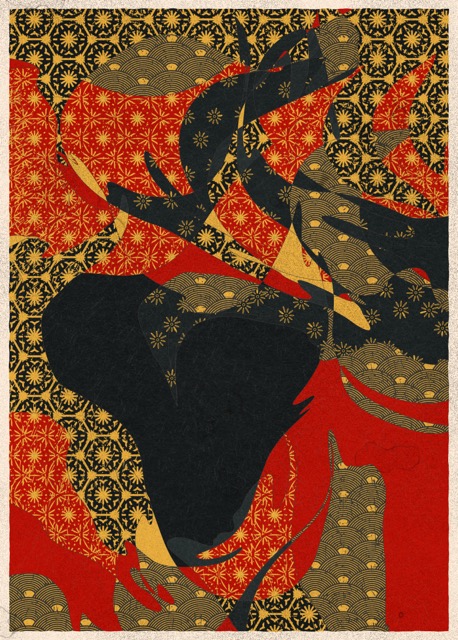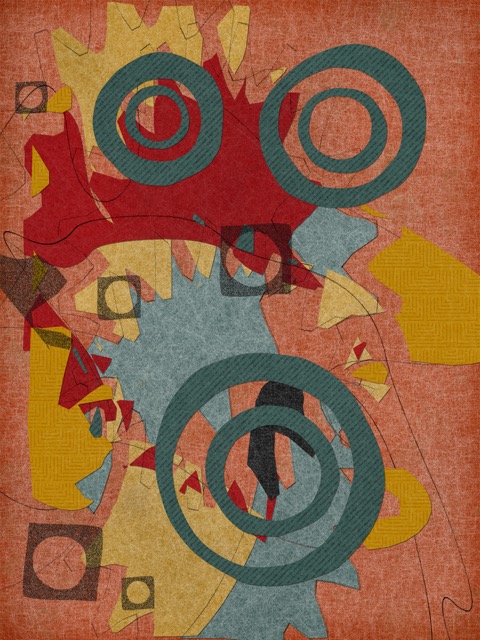
Creating ‘organic’ generative art from robotic algorithms: Emily Xie, NFT Creator

New York NFT artist Emily Xie explores the tension between creativity and “cold and robotic” algorithms. Punk6529 and DC Investor are collectors.
New Yorks Emily Xie is exploring the new frontier of digital art by combining her skills and passion for computer science and generative art.
In a little under two years, since she minted her first NFT in March 2021, she has caught the attention of prolific collectors, such as Punk6529, DC Investor and Bob Loukas, and recently left her software engineering job to pursue life as a full-time artist.
I studied art history, took studio art courses, but also studied computational science and engineering. I made all sorts of art growing up, but it was more in a traditional media way. As a software engineer, I was always hoping to combine my love for programming as well as my love for art and creativity, says Xie.

Discovering generative art
I found that desire in generative art in around 20152016. It made a lot of sense making art with code. You dont get any more of a direct and elegant combination than that of those two fields.
Its so full of exploration. Youre engaging with technology in a way thats creative because it exercises both sides of the brain, and thats a rare thing to encounter.
Xie attributes her love for making generative art to the freedom it gives her to let her creativity loose, and she gets lost in the process.

Generative art is meditative for me. Whenever I made it, I got really sucked into it. The world around me would just disappear, and I would spend hours just programming and seeing what the algorithm might do.
Prior to NFTs, there was not very much opportunity to actually make a living out of it. When NFTs did come along, it was the first time where I actually saw a pathway for myself to be making a living as an artist.
Inspired by East Asian art, Xies collection Memories of Qilin was launched via Art Blocks a year ago and has now seen over 4,400 ETH ($7.4 million at the current ETH price) in secondary sales.
In July 2022, Xie teamed up with Bright Moments for her 100-piece collection Off Script, which is an algorithmic representation of a 20th-century modern art collage.
Just recently, the New York resident engaged in a collaboration with the Los Angeles County Museum of Art, and she also has worked with SuperRare and Objkt (Tezos).
Influences
Xie takes influence from many artists and styles but specifically singles out Japanese ukiyo-e artist Hokusai, best known for the famous big wave woodblock print, and Spanish painter Picasso who revolutionized abstract art with cubism.
For me, I love abstract expressionists and early modern collage artists, but a few names that come to mind are Hokusai and Picasso, she says, also referencing the Fidenza NFT artist Tyler Hobbs.
Read more: Tyler Hobbs wrote software that generates art worth millions
Theres a lot of generative artists that have inspired me over the years. Tyler Hobbs is one of those. Id also say Zach Lieberman has been a huge inspiration, says Xie.
In general, the genre influences for me are collage and textiles. I draw a lot of real-world inspiration from them.

Personal style of generative art
Xies aesthetically pleasing style takes inspiration from traditional East Asian art, and she has a knack for creating pieces that can be studied with the naked eye at length.
I would say that my personal style is very influenced by textiles, patterns, collage and wallpaper. This idea of bringing together a lot of different patterns and putting them into one piece and seeing how that can create something so cohesive thats really interesting to me, Xie states.
Her work brings human warmth to what could be a sterile nature of computer-generated art.
I would say that, a lot of times, my artwork tends to have a very organic feel. It explores this tension between what is handmade and appears very human versus what is computational and somewhat cold and robotic.
Its very fascinating to me to bring in a sense of organic and human into a medium thats inherently digital with the code I use.
Notable generative art sales to date



NFT artists to watch
Xie points out a number of up-and-coming NFT artists shes excited about.
William Mapan An artist who works with code and has been featured on Art Blocks, Bright Moments and at Sothebys.
William is an incredible artist. He has all these beautiful, hand-drawn-looking works. His series Anticyclone is just stunning, and Ive collected one. I think he really loves drawing inspiration from traditional media as well.
Iskra Velitchkova A computational generative artist whos also been featured at Sothebys.
Her work has a very digital quality to it. Whilst digital, its also deeply atmospheric. Her style is so consistent. If you see an Iskra Velitchkova piece, you know its hers.
Sasha Stiles A metapoet and AI researcher.
Sasha is doing some amazing work around artificial intelligence and poetry. Its very cutting edge in my opinion.
Generative art process
Using a combination of traditional sketching, photoshop and writing algorithms, Xies process can be quite time-consuming and detailed.
Programming is a pretty intensive process, so you want to visualize what youre trying to program as concretely as possible before doing it. I typically do that in Photoshop and sketch out what happens if I add a line to a given element. Ill look to see if that makes sense. If it looks good, I will then program it out and see where that takes me, says Xie.
Often, it starts with a pretty extensive mood boarding process where Ill go and collect a bunch of images that I love that Im inspired by. That gives me an idea of what Im interested in at that moment. Sometimes, I cant articulate or vocalize that myself; its a very subconscious thing.

Once Xie has an idea of what she wants to make, she starts to code to create the output.
When Ive got my inspiration, I then start tinkering around with algorithms. Sometimes, that means revisiting an algorithm that Ive already written or learned about, for example, flow field. From there, its a matter of trying to draw inspiration from other elements and attempting to recreate them using code.
Typically, what that means is youll lay down some lines of code and then youll see what it produces, and itll render on your screen. From there, it becomes an iterative process of playing with parameters. For example, if you constrained one parameter, you might get wavy lines instead of something else. Youre constantly going back to your code, editing it and rendering it, and then repeating that process over and over again until you get something you like.
Throughout my programming process, I actually try to prototype rapidly as much as possible because you can also run into the problem where you have an idea and spend all day programming it out, but it looks bad, and youve wasted all that time.
Physical-to-digital art paradigm shift
Xie says that tokenized digital art is turning the traditional relationship between original and reproduction on its head.
Its interesting because, in the past, the Mona Lisa physical object is the true piece. Then every other picture of it you find floating around on the internet is just a manifestation of it. In this paradigm, its the complete opposite, which is really funny. I think its really important because, for the longest time, the traditional model left digital artists without a real way to assign originality and collectibility to the artwork, Xie says.
In the past, there wasnt an easy way for my generative art to be collected. How do you collect something that sits on your computer but could be transferred to any computer all around the world with a click of a button? It required a way to assign rarity to a JPEG. NFTs are it. If people really think about it, it makes so much sense, and it opens up digital art to be finally appreciated and collected.
Favorite NFT you own
I would have to say Anticyclone by William Mapan and Folio #22 by Matt DesLauriers. I love both of those pieces that Ive collected.
Links:
Lynkfire: linktr.ee/emilyxxie
Twitter: twitter.com/emilyxxie
Memories of Qilin website: memoriesofqilin.com/

Go to Source
Author: Greg Oakford









